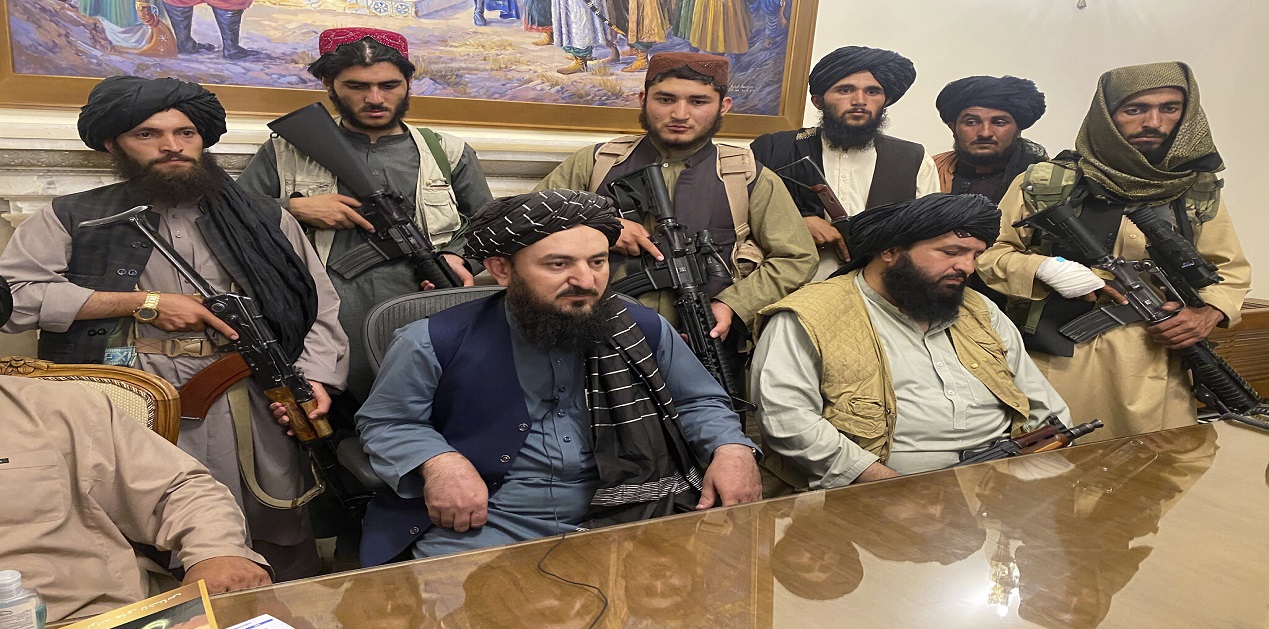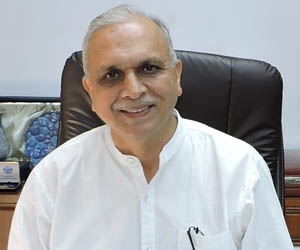On Sunday, 15 August 2021, President Ashraf Ghani fled Afghanistan, leaving his country and countrymen in a deep crisis. Kabul was in chaos as thousands tried to leave the country fearing the Taliban’s triumphant return to the city after twenty years. With the entire country now under Taliban control, the talk of a negotiated settlement is meaningless.
The situation is in flux. Abdullah Abdullah, the head of the High National Reconciliation Council that negotiated with the Taliban in Doha, the former President Hamid Karzai, some former Mujahideen leaders are reportedly in touch with the Taliban. It is not clear whether there will be an interim government. Henceforth the Taliban, fully backed by Pakistan, will dictate the terms in Afghanistan.
Uncertainty is feeding panic and chaos in the city. Thankfully, widespread violence has not yet been reported. The Taliban have issued statements that there would be no revenge on their part. An Islamic Emirate and Sharia law will be imposed. They have also reassured that women will be allowed access to education and jobs. But these are mere statements at this moment. A clearer picture of the Taliban’s policies will emerge in the coming days.
Ironically, the US has helped bring back the same Taliban to power whom they dislodged after a fierce bombing in 2001 because they were harbouring the Al Qaeda chief Osama bin Laden, the architect of the 9/11 terror attacks in New York. One cannot help notice that Kabul collapsed even before the 31 August deadline set by Biden for troop withdrawal. The US flag was lowered and the embassy staff was evacuated the day the Taliban entered Kabul.
There is outrage in the US over the manner in which it handled the situation. Former President Trump has criticised Biden for the handling of the situation. Many people think that the US prestige and credibility has been lowered. More important the US ability to stand by its commitments to its friends will be questioned.
The deal signed by the US with the Taliban behind the back of the duly elected government paved the way for the Taliban’s legitimization. The decision to withdraw US and NATO troops before 31st August, announced publicly, emboldened the Taliban to launch their military campaign. The speed of Taliban advances and the inability of the Afghan National Army to put up a fight was truly remarkable.
The surrender to the Taliban came after the latter ran over many of the key cities and most provincial capitals without a fight from the Afghan National Army. The ANA was trained and equipped by the US. Their inability to fight has come as a big surprise. There could be many reasons for this. One reason is that their morale was very low. More importantly, the Afghan National Army was trained as a counter-terrorism force and not as a conventional army. The ANA could not mobilise to attack, defend and hold areas. Their dependence on the US airforce for air support and intelligence also proved debilitating. The Afghan National Army was maintained by US contractors because it used US and NATO equipment. When the US withdrew maintenance and air support, the ANA was crippled. Another reason could be that the Taliban were able to bribe through the army. The disconnect between the political leadership and the military leadership was made the ANA dysfunctional.
There will be a lot of post-facto analysis and post mortem as to what went wrong. Right now it is difficult to make accurate assessments. But a series of errors were committed. The US would have a lot of explaining to do why it withdrew in such a disorderly fashion. Why did it strike a deal with the Taliban behind the back of the elected government? Why did it not take action against Pakistan without whose support the Taliban could not have come to power?
Pakistan's role in providing safe havens, sanctuaries and other support to the Taliban needs to be probed. As several Afghan leaders including Ghani noted in the past, thousands of fighters had come to Afghanistan in the last few months. The international community instead of imposing sanctions on Pakistan encouraged it all the way.
A new chapter begins in the long history of Afghanistan. Will the Taliban 2.0 government bring peace and stability to the country? Will the gains of the last 20 years be preserved? Have the Taliban changed? Will they curb the numerous terrorist and militant groups that are active in the region and pose threat to the neighbouring countries?
Many people think that Taliban 2.0 will be more moderate. This is a questionable assumption and will be tested soon. Many top leaders from around the world have raised concerns about the Taliban violating human rights. Women in Afghanistan are particularly vulnerable. There is a genuine worry that the Taliban may restrict their movements and confine them to homes. Already, the posters featuring women are being painted over in Kabul.
The Taliban are determined to set up an emirate and impose sharia law. There would be no compromise on that.
Taliban would be looking for some kind of legitimacy. They would try to project that they came to power not by force but by a negotiated settlement. If the Taliban government is recognised even by a few key governments, they would have gained a major victory. They would set up the emirate, continue with their Islamisation programme with the approval of the international community.
China and Pakistan, the biggest supporters of the Taliban, are likely to give them early recognition. The US and the West would be more circumspect as they would have concerns about human rights violations etc. Russia would be also be inclined to recognize the Taliban. Saudi Arabia and UAE had recognised the Taliban in the 1990s. Iran would be concerned at the Taliban’s return but as a neighbour would have some working relations with them.
For Pakistan, the return of the Taliban is a major victory. It would certainly work to undo the Indian influence in the country, gained due to India’s numerous projects.
The Taliban have been assuring the international community that they will not let the Afghan soil to be used for activities for militant activities. Only time will tell how credible their assurances are.
India would be watching the Taliban’s actions carefully. In India, there is a palpable fear that terrorist groups would be emboldened. The China-Pakistan-Taliban nexus would be a cause of worry for India.
India is likely to follow the international trend. It may not take the lead in recognising the Taliban government while assessing the evolving situation for some time. A hurried reaction should be avoided.
The Afghan chapter is not over. The scenario that there could be some resistance in some pockets, like Panjshir and Hazarajat regions need to be watched.
The international community should make it clear that the recognition is dependent upon the Taliban following international norms of behaviour. Supporting terror groups and curtailing the rights of women should be a no-no.
India should continue its consultations with the international community. Being in the Chair at UNSC, India can play some role in evolving a consensus on how the international community should deal with the Taliban.
(The paper is the author’s individual scholastic articulation. The author certifies that the article/paper is original in content, unpublished and it has not been submitted for publication/web upload elsewhere, and that the facts and figures quoted are duly referenced, as needed, and are believed to be correct). (The paper does not necessarily represent the organisational stance... More >>
Image Source: https://static.timesofisrael.com/www/uploads/2021/08/AP21227742379832.jpg











Post new comment